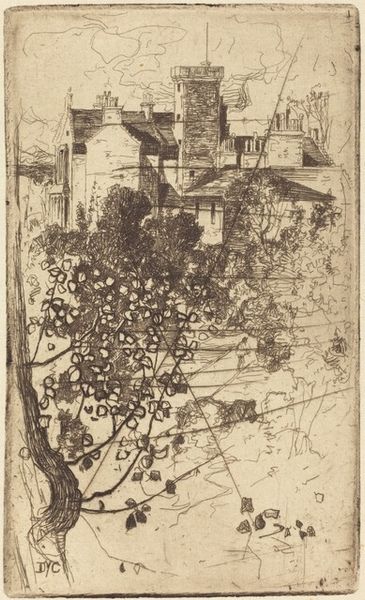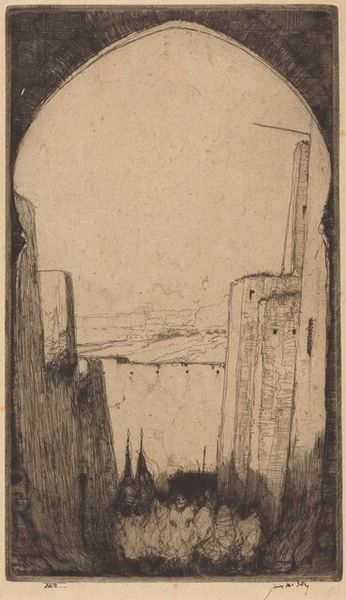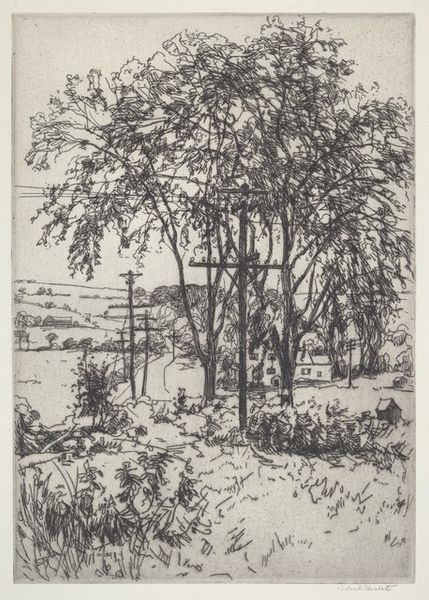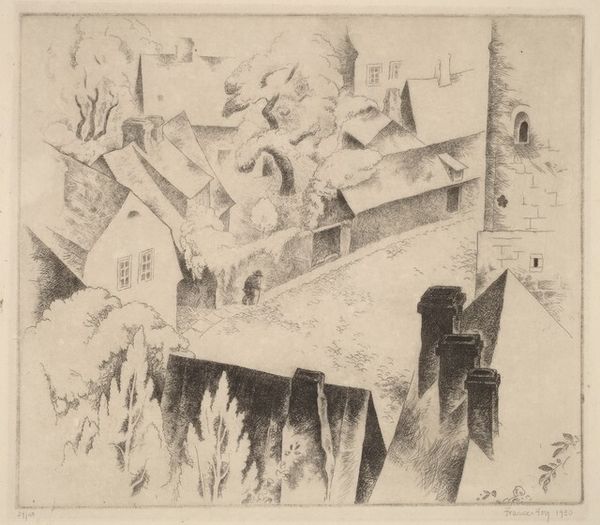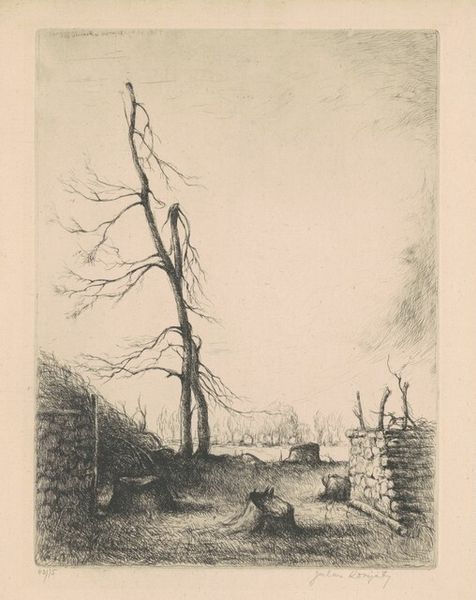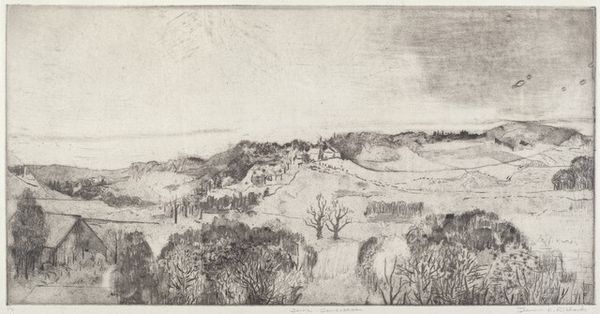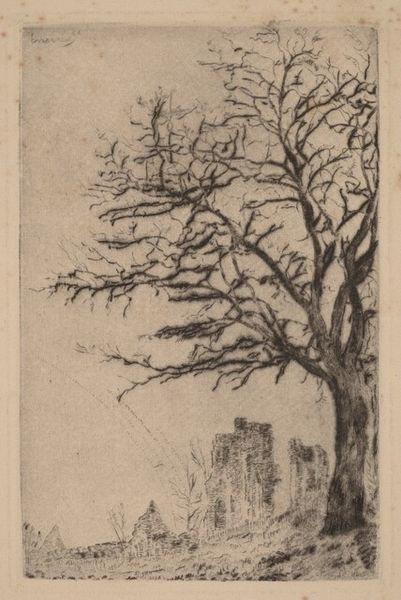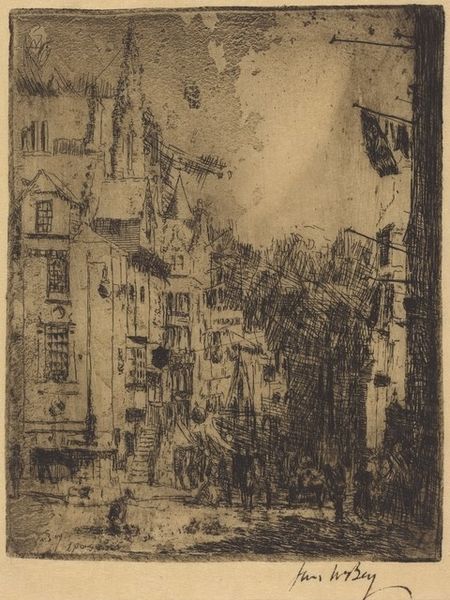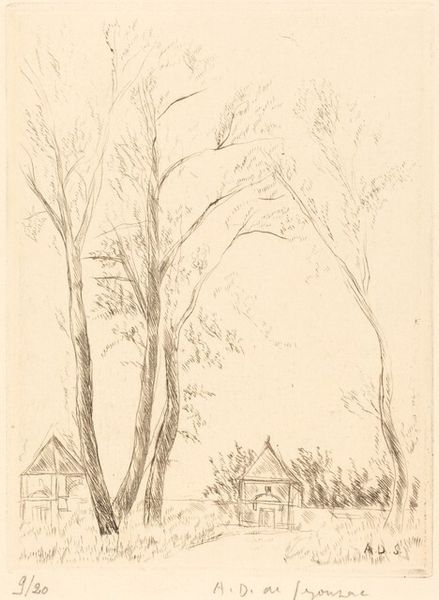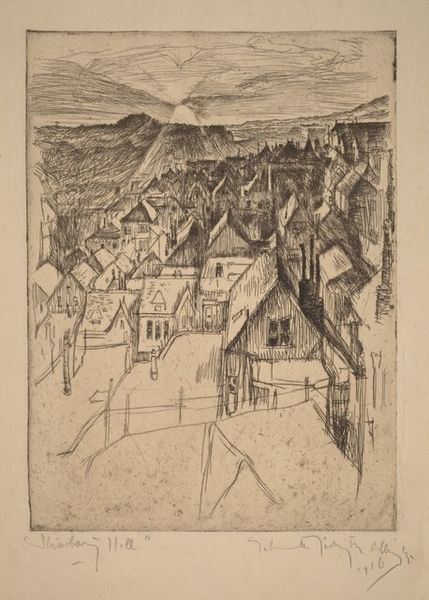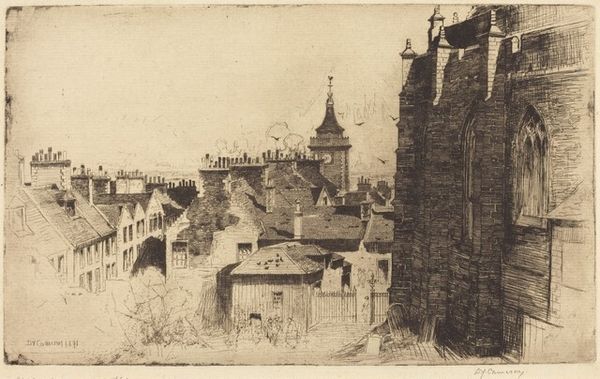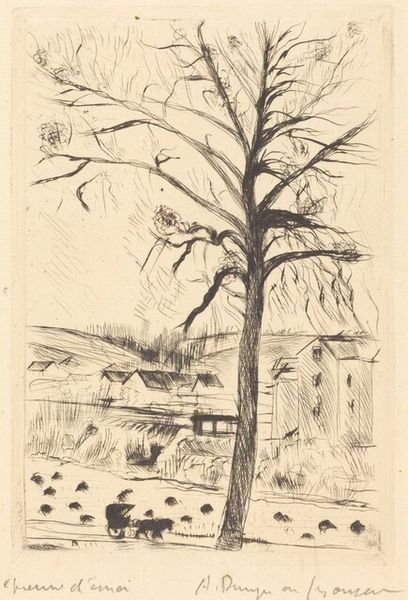
print, etching
# print
#
etching
#
landscape
#
scottish-colorists
#
cityscape
#
realism
Copyright: National Gallery of Art: CC0 1.0
David Young Cameron's "Barochan" is an etching, a printmaking technique that relies on the corrosive action of acid to create an image in metal. The appearance of the artwork is defined by the crisp, precise lines etched into the metal plate. Cameron would have coated the plate with a waxy, acid-resistant substance, drawn his design with a sharp needle to expose the metal, and then immersed the plate in acid. The longer the plate sits in the acid, the deeper the lines, which hold more ink and appear darker in the final print. This intaglio process allowed for the creation of fine details and subtle tonal variations. Printmaking in general has always had a close relationship to the distribution of information and ideas. The multiple nature of prints meant that images could be widely disseminated, reaching a broad audience and influencing public opinion. The labor is front-loaded: the initial making of the plate is intensive, but once the plate is made, many prints can be created from it. Ultimately, understanding the craft involved in "Barochan" helps us appreciate the democratic potential of printmaking as a medium, capable of both artistic expression and social commentary.
Comments
No comments
Be the first to comment and join the conversation on the ultimate creative platform.
